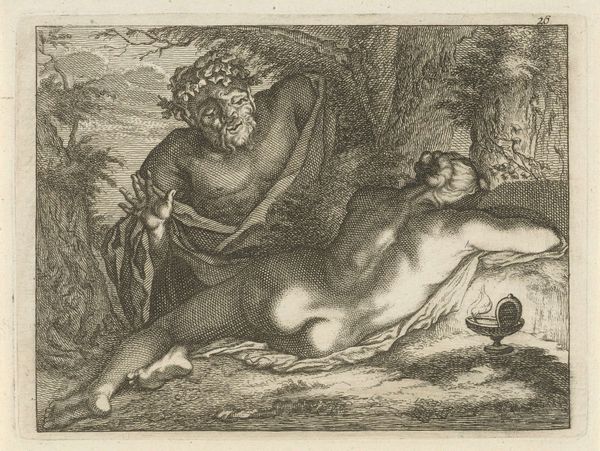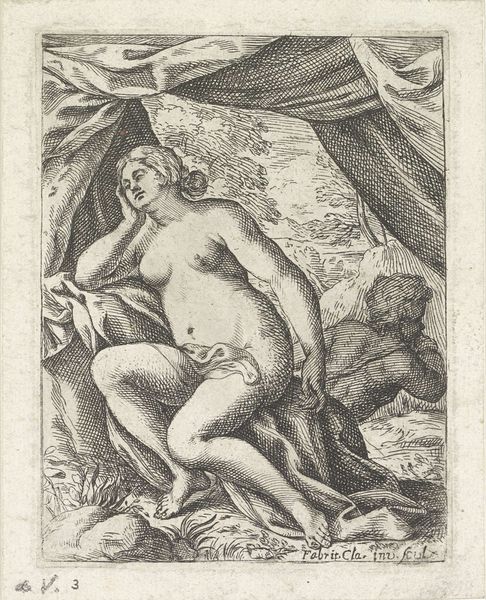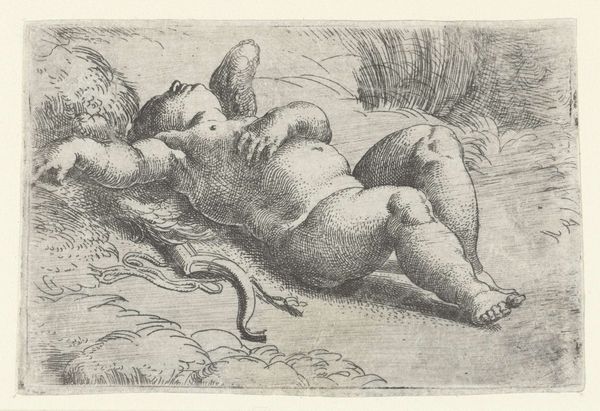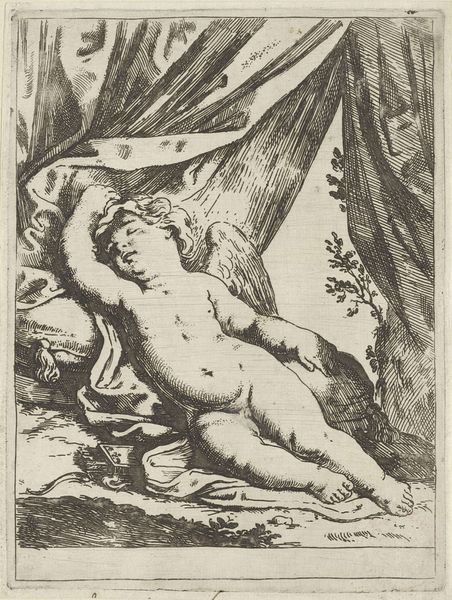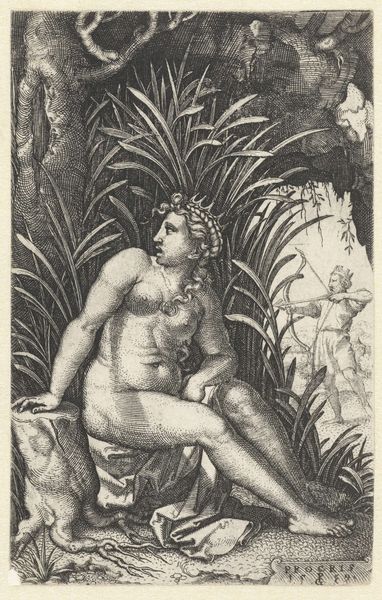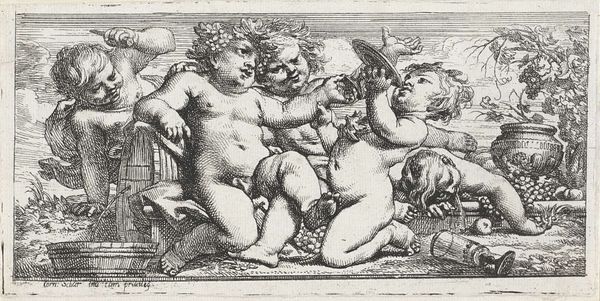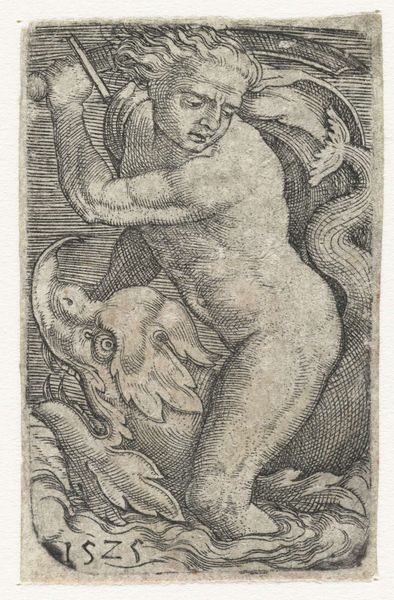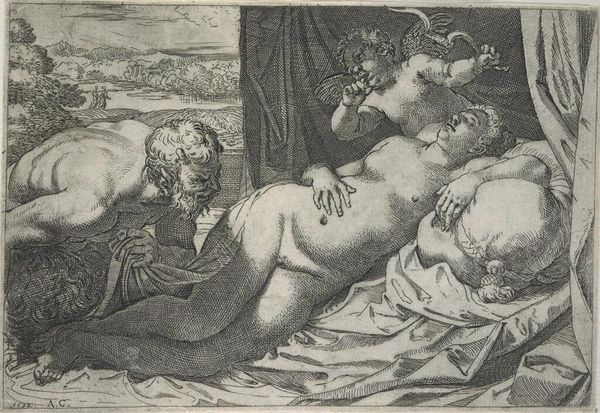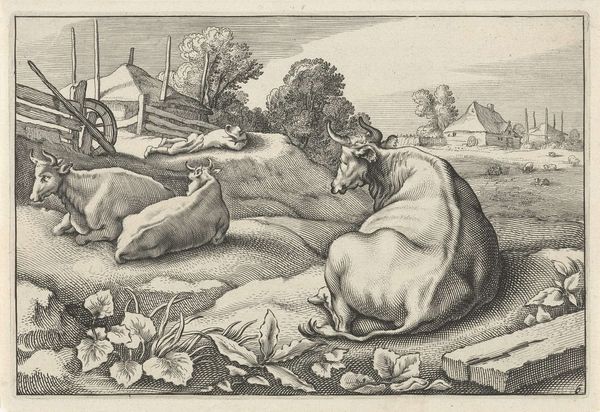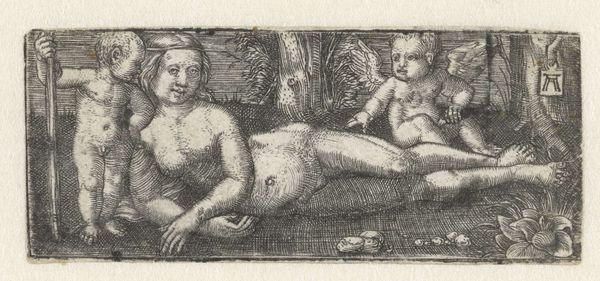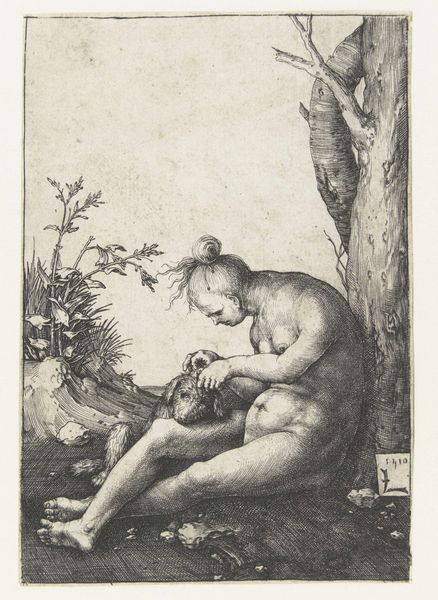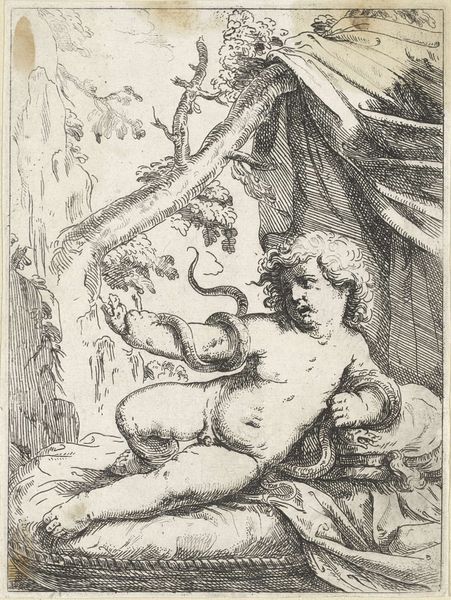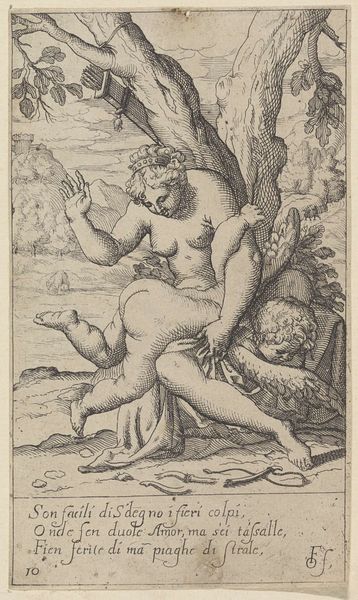
engraving
#
portrait
#
allegory
#
baroque
#
mannerism
#
nude
#
engraving
Dimensions: height 70 mm, width 102 mm
Copyright: Rijks Museum: Open Domain
Editor: So, this is "Liggende putto met zandloper en schedel," or Reclining Putto with Hourglass and Skull, an engraving by Zacharias Dolendo made around 1600. It feels almost dreamlike, this fleshy baby lounging next to such potent symbols of death and time. How do you interpret this work? Curator: Well, consider the recurrence of similar images throughout the Renaissance and Baroque periods. The hourglass and the skull are instantly recognizable as "memento mori" symbols, constant reminders of mortality. But juxtaposed with the putto, a symbol of innocence and new life, we're presented with a powerful allegory. Editor: So, it’s a visual representation of the passage of time, maybe? The brevity of life? Curator: Exactly! And not just of time, but also innocence facing mortality. Notice how the putto seems oblivious, asleep, almost embracing the skull. Dolendo might be suggesting something about the cyclical nature of life and death, perhaps a commentary on spiritual renewal? Editor: I hadn't thought about it that way, but now I see the artist is less about pure morbidity and more about... transformation? Curator: Precisely. This engraving pulls from cultural memory; the viewer would recognize the traditional symbols, the visual shorthand, immediately. Do you think this changes how we view the putto itself? Editor: Definitely. Initially, the baby seemed purely innocent, but in this context, it becomes a more complex symbol, a part of a continuous cycle. It makes the work feel less like a warning and more like a meditation. Curator: A potent image open to interpretation, reflecting enduring themes about our existence. It reminds me how artistic expression has power to make death familiar and somewhat consoling.
Comments
No comments
Be the first to comment and join the conversation on the ultimate creative platform.
